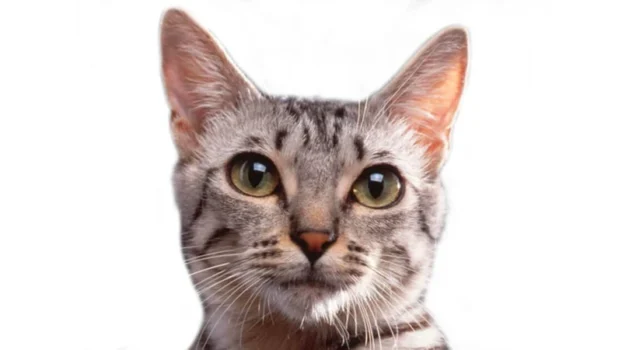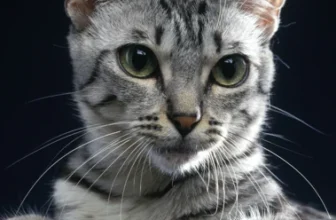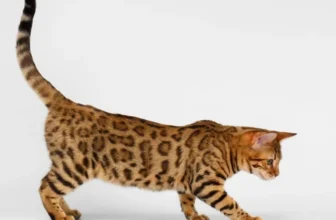Raising a California Spangled Cat involves various aspects of care, including determining the optimal breeding age. Many cat owners may find themselves perplexed about when the best time is to mate their feline friend. Breeding at the right age not only ensures a healthy litter but also significantly reduces potential health risks. However, the breeders should also take into account some factors before, during, and after breeding. In this article, we will provide a comprehensive guide on factors to consider when determining the optimal breeding age, how to prepare your cat for breeding, potential breeding problems, and how to take care of the mother and kitten during and after pregnancy, labor, and delivery.
What Age Should You Breed Your California Spangled Cat?
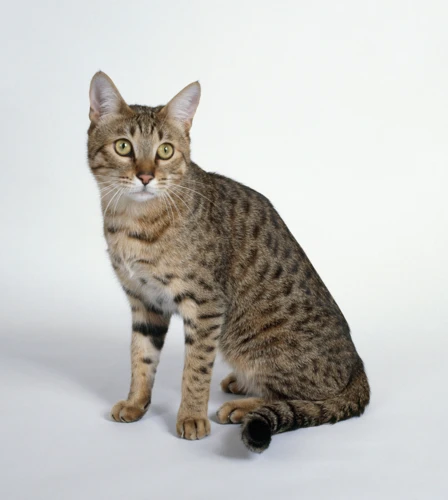
As a California Spangled cat owner, you may be wondering about the ideal age to breed your furry friend. Breeding a cat at the right age is crucial both for their own health and the health of their offspring. However, determining the optimal age for breeding can be a complex process, and there are several factors to consider before making this important decision. In this article, we will guide you through the process of determining the perfect age for your California Spangled cat to breed. We’ll also highlight some essential factors that you should keep in mind before, during, and after the breeding process. By the end of this guide, you’ll be well-equipped to make informed decisions that will benefit both your cat and their future offspring.
The Ideal Age for Breeding
Determining the ideal age to breed your California Spangled cat is crucial for the success of the breeding process and the health of your feline friend.
The ideal breeding age for California Spangled cats can vary depending on various factors such as breed standard, physical maturity, and overall health.
Generally, California Spangled cats should not be bred before the age of 12 months. This is because at this age, they have reached their full physical maturity and are mentally and emotionally ready for the breeding process.
Breeding your cat too early can lead to various health complications, such as gestational problems, respiratory infections, and neonatal mortality.
Cats that are bred after the age of 7 years may face difficulty conceiving or may produce offspring with genetic abnormalities.
It is essential to choose the right breeding age to ensure a healthy litter and minimize the risks of complications and health issues. Additionally, consulting with a veterinarian to determine the optimal breeding age for your specific cat is always recommended.
Factors to Consider before Breeding
Factors to Consider before Breeding:
- Genetics: One of the most important factors to consider before breeding your California Spangled cat is its genetics. It’s crucial to know your cat’s genetic health and lineage to ensure that you do not pass on any genetic disorders to the offspring. Make sure to consult with a veterinarian or a professional breeder who can determine the cat’s genetic health.
- Health: A healthy cat is more likely to produce healthy offspring. Make sure your cat is in good overall health and up-to-date on all vaccinations. It’s also crucial to conduct a thorough health checkup to ensure that your cat is free from any underlying health issues that could affect the pregnancy or the kittens.
- Age: Age is also a crucial factor to consider before breeding your California Spangled cat. The ideal age for breeding a cat is between 1 to 3 years. Breeding a cat that is too young or too old can lead to complications during pregnancy and delivery, resulting in unhealthy or miscarried kittens.
- Temperament: It’s essential to consider your cat’s temperament before breeding. You don’t want to breed a cat that is overly aggressive, as this trait can be passed down to the offspring. It’s also crucial to ensure that your cat is trainable and can adjust well to new environments, as this can impact how the kittens behave in new surroundings.
- Breeding Experience: Consider your cat’s previous breeding experience, if any. If it’s your cat’s first time breeding, provide a calm, stress-free environment for the cat and monitor closely to ensure that the mating is successful. Breeding with an experienced cat can be easier, but it is still essential to monitor the process.
Before breeding your California Spangled cat, it’s crucial to take into account all of these factors to ensure that the breeding process goes smoothly and produces healthy kittens. For more information on preparing for breeding, check out our article on Preparing for California Spangled Cat Breeding: Tips and Tricks.
How Do You Know If Your Cat is Ready to Breed?
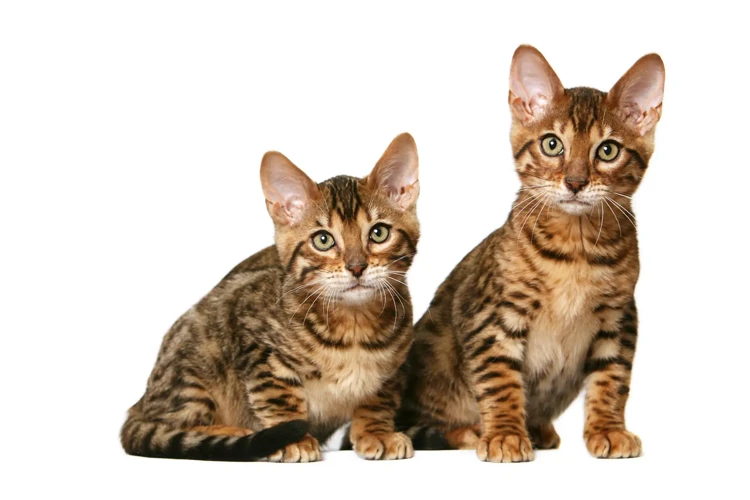
As a cat owner, it’s essential to know the optimal age for breeding your California Spangled Cat. However, determining if your feline companion is ready to breed is equally crucial. Knowing how to determine if your cat is ready to breed will help you ensure that the mating process is successful and free from complications. In this section, we’ll explore the physical, health, and behavioral indicators that will tell you if your California Spangled Cat is ready to mate.
Physical Maturity
When it comes to breeding your California Spangled cat, physical maturity is a crucial factor that should never be overlooked. Cats typically reach puberty at around 6 months of age but that doesn’t mean they are ready to breed. In fact, you should wait until they are at least a year old before even considering breeding them.
Here are some physical signs that indicate your cat is physically mature enough for breeding:
- The cat has reached its full size and weight. Typically, a California Spangled cat reaches its full size at around 2 years of age, but they often reach their maximum weight at around 12-18 months of age.
- The cat has developed sexually. For males, this means that their testicles have descended and they are producing sperm. For females, this means that they have entered into sexual maturity and their reproductive organs are fully developed.
- The cat has fully developed teeth. Adult teeth usually come in around 6 months of age and are fully developed by 1 year.
- The cat has a healthy coat and skin. Breeding should only be considered if your cat is healthy and free from any skin or coat issues.
Keep in mind that not all cats mature at the same rate, and some may not be ready to breed until they are 2-3 years old. It’s important to wait until your cat is fully matured before breeding to prevent any potential health complications.
To learn more about breeding your California Spangled cat, check out our California Spangled Cat Mating Guide and 5 Signs of Successful Mating in California Spangled Cats.
Health Check-Up
It is essential to take your California Spangled cat to the vet for a health check-up before breeding. A health check-up can help detect any underlying health issues that may affect pregnancy or hinder your cat’s ability to bear healthy kittens.
During the health check-up, the veterinarian will perform a physical examination and run a series of tests to ensure that your cat is in good health. The vet will check for any pre-existing medical conditions, infections, or parasites that may lead to complications during or after pregnancy.
The vet will also recommend vaccinations and deworming if necessary to ensure that your cat’s immune system is strong before pregnancy. Additionally, the veterinarian will discuss with you the possible risks and benefits of breeding your cat, and whether it is a good idea for the cat’s health and well-being.
It is important to note that some cats may have an underlying health condition that can only be detected through genetic testing. Thus, it is recommended to ask your vet about the genetics of California Spangled cats and whether genetic testing is necessary.
Ensuring your cat’s physical and mental well-being is crucial to successful breeding. Be sure to take into consideration the possible infertility issues that can arise from breeding a California Spangled cat too early or too late. With careful planning and preparation, you can significantly increase the odds of having a healthy litter of kittens.
A health check-up is a must before breeding your California Spangled cat. It is essential to prepare your cat’s body and to invest in its overall well-being to achieve successful breeding. Keep in mind the potential risks and complications that can arise, and don’t hesitate to consult with your veterinarian for advice and recommendations.
Mating Readiness
Understanding the Mating Readiness of Your California Spangled Cat
While cats reach sexual maturity at around 6 months, it’s essential to ensure that your California Spangled Cat is ready before breeding. Mating readiness depends on several factors, such as physical and emotional maturity, as well as the cat’s behavior. Here are a few signs that your cat is ready to mate:
| Signs of Mating Readiness | Description |
| Vocalization | Female cats will start to vocalize when they’re in heat. They’ll make loud sounds to attract mates and signal their readiness to breed. |
| Flirtatious behavior | The female cat may also exhibit flirtatious behavior to attract mates. This includes rubbing against objects, rolling on the ground, and showing increased friendliness and affection. |
| Physical changes | Both male and female cats will exhibit physical changes when they’re ready to mate. These include swelling of the genitals, increased secretion of pheromones, and hyperactivity. |
| Mating rejection | If the female cat is not ready to mate, she may show rejection behaviors, such as hissing, growling, or swatting at the male. It’s essential to observe the cat’s behavior to ensure that it’s consensual mating. |
It’s crucial to understand your California Spangled Cat’s mating readiness before breeding to ensure successful reproduction and minimize the risk of complications. If you’re unsure about your cat’s readiness, a veterinary check-up can help determine if your cat is ready to breed. Remember, mating readiness is only the first step in the breeding process, and careful preparation and holistic care are necessary to ensure a successful and healthy pregnancy, labor, and delivery.
If you’re interested in reading more about breeding and birthing California Spangled Cats, check out our article on California Spangled Cat Birthing. You can also read about genetics and hereditary diseases in California Spangled Cats in our article on Genetics of California Spangled Cats.
Preparing for Breeding
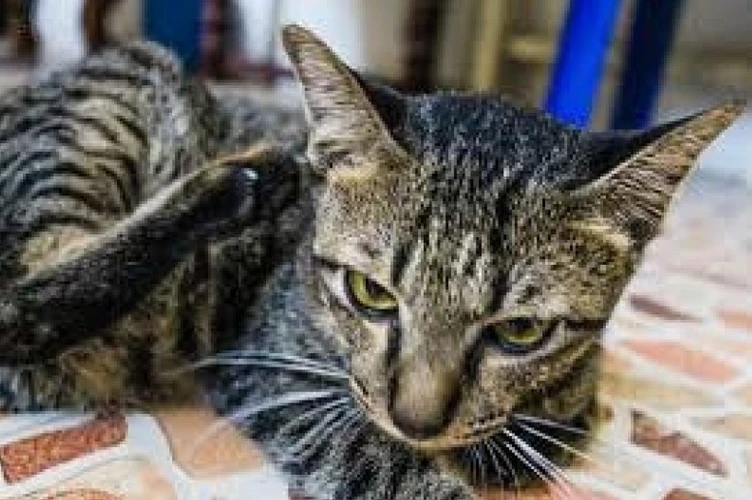
Breeding a California Spangled Cat is an important decision that requires careful preparation. Whether you’re planning on breeding your cat for personal or commercial purposes, there are several aspects to consider to ensure the process goes smoothly. Preparation is key to a successful breeding experience. From selecting the right mating partner to managing stress levels, there are several factors to take into consideration. However, it’s important to note that some cats may face fertility issues such as those discussed in our article on California Spangled Cat infertility. Let’s delve deeper into the steps you can take to prepare for breeding your California Spangled Cat.
Careful Selection of Mating Partner
When it comes to breeding your California Spangled cat, selecting the right partner is crucial for the health and quality of the offspring. Here are some key considerations to keep in mind:
- Choose a healthy cat: Before breeding, it’s important to have genetic testing done on both cats to ensure that they don’t carry any hereditary diseases or disorders that could be passed down to their kittens. You should also make sure that both cats have had a recent check-up with a veterinarian to confirm that they are in good health.
- Look for compatibility: California Spangled cats have their own unique personalities, just like humans. It’s important to find a mate that shares a similar temperament to your cat to ensure a healthy pairing. If your cat is shy and timid, a highly energetic and dominant mate could trigger anxiety and stress during mating.
- Consider physical attributes: If you want to breed your cat to produce a specific coat pattern or eye color, it’s crucial to choose a mate that displays those same physical attributes. For example, if you want kittens with golden eyes, make sure that your chosen mate has that trait.
- Look for breeding experience: While it might be tempting to choose a cat that’s never mated before, it’s often safer to choose a cat that has some breeding experience. Experienced mates tend to be more confident during the mating process, which can reduce the chances of injuries or complications.
By taking the time to carefully select a mate for your California Spangled cat, you can ensure that the breeding process is safe and healthy, and that the kittens are of the highest quality.
Proper Nutrition and Supplementation
Proper nutrition and supplementation are crucial for ensuring a healthy pregnancy and delivery for your California Spangled cat. Here are some important things to keep in mind:
- High-Quality Food: During the breeding period, it’s essential to give your cat high-quality, nutrient-rich food. Make sure the food you give them is specifically formulated for pregnant cats, as well as nursing mothers.
- Increased Food Intake: As the pregnancy progresses, your cat’s calorie requirement will increase. Gradually increase their food intake to about two to three times their normal amount for optimal growth and development of the litter.
- Supplements: You may also want to consider supplements, such as folic acid and vitamin E, to prevent developmental defects and ensure the proper growth of your cat’s kittens. Consult with your veterinarian to find out which supplements are best for your cat’s particular needs.
- Adequate Water Supply: Make sure your cat has access to plenty of fresh, clean water at all times. It’s especially important during pregnancy and lactation.
- Avoiding Harmful Foods: Some foods, such as chocolate, onions, garlic, and grapes, can be toxic to your cat and their developing kittens. Avoid feeding these foods during pregnancy.
Remember, proper nutrition and supplementation are the foundation of a healthy and successful breeding process. Consult with your veterinarian to make sure you’re providing everything your California Spangled cat needs to ensure a safe and healthy delivery, and a happy litter of kittens.
Stress Management
In order for your California Spangled Cat to successfully breed, stress management plays a crucial role. Here are some important stress management tips to keep in mind:
- Reduce exposure to external stressors: External stressors such as loud noises, unfamiliar people, and other animals can induce stress in your cat. To minimize this, keep your cat in a quiet, familiar environment during the breeding process.
- Establish a routine: Your cat thrives on routine and predictability. Creating a daily routine with established feeding, playing, and resting times can help reduce stress and anxiety.
- Provide a comfortable living space: A comfortable and relaxing environment can significantly decrease stress levels in cats. Make sure your cat has a cozy bed, access to clean litter boxes, and plenty of toys and scratching posts to play with.
- Use pheromone sprays: Pheromone sprays, such as Feliway, can help to calm and reassure cats during stressful situations. These sprays mimic the natural pheromones that cats release, which can provide a sense of comfort and reassurance.
- Be patient and calm: Your cat can pick up on your emotions, so remaining calm and patient during the breeding process can help reduce their stress levels. Approach your cat with a calm, gentle demeanor, and avoid sudden movements or loud noises.
By implementing these stress management tips, you can help to create a relaxed and comfortable environment that can increase your cat’s chances of successful breeding. Remember, a happy and stress-free cat is a healthy cat!
During and After Breeding
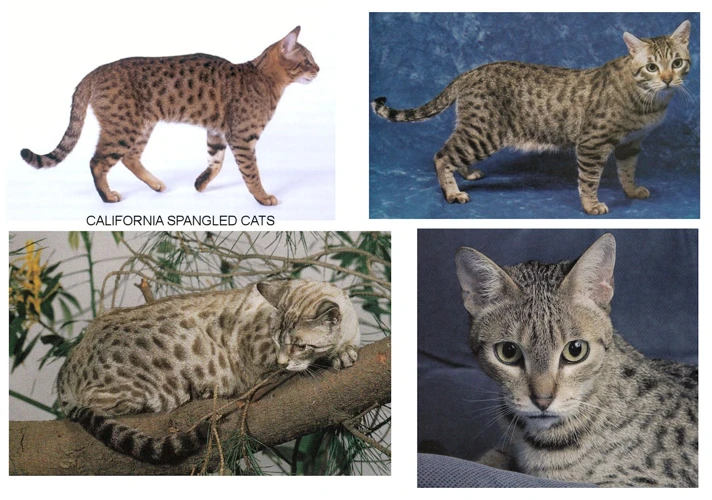
As your California Spangled cat enters the breeding phase, it’s important to be prepared for what comes during and after the process. During and after breeding, your cat will require extra care to ensure a healthy pregnancy and safe delivery. From the mating process to postnatal care, let’s take a look at what you can expect and how you can ensure the best outcome for your furry friend.
Mating Process
Mating is a crucial process in breeding your California Spangled Cat. During this process, your cat will mate with its chosen partner and conceive kittens. It’s important to understand the process of mating to ensure a successful breeding.
Mating Behavior
When cats are in heat, they display certain behaviors to attract potential mates. A female in heat may become more vocal, rub against objects and people, roll around on the floor, and raise her hindquarters. Male cats, on the other hand, may become more aggressive and vocal. They may also spray urine to mark their territory.
Introducing the Mating Pair
When introducing the male cat to the female, it’s important to do so slowly and under close supervision. Keep both cats in separate but adjacent rooms for a few days. This allows them to become familiar with each other’s scent. After a few days, introduce them under controlled circumstances. Keep an eye on their behavior to ensure they aren’t fighting.
Successful Mating
When the female is ready to mate, the male will mount her from behind. He will then grip the female’s neck with his teeth and begin to copulate. The mating process can last anywhere from a few seconds to a few minutes. It’s important to note that while cats can mate multiple times, it’s recommended to limit mating to once or twice a day to ensure both cats’ health and well-being.
Safety Precautions
During the mating process, it’s important to ensure the safety of both cats. Keep the area where they are mating free from any hazards that could cause injury. Additionally, monitor their behavior to ensure that the male cat isn’t too aggressive towards the female.
Post-Mating Care
After mating, it’s important to separate the male and female cats to ensure the female’s comfort. This also helps prevent injury if the male cat becomes too aggressive. Observe the female for signs of distress or any discharge. If you notice anything out of the ordinary, contact your veterinarian immediately.
Conclusion
Understanding the mating process is essential to the successful breeding of your California Spangled Cat. It’s important to take precautions and monitor behavior to ensure the safety and well-being of both cats. By following these guidelines, you can ensure a successful mating and pregnancy.
Pregnancy Care
Pregnancy Care is a critical aspect of breeding your California Spangled cat. It is important to ensure that your cat receives proper care and attention throughout the pregnancy period to increase the chances of a successful delivery.
Prenatal Care
Before your California Spangled cat gives birth, it is necessary to provide her with prenatal care. This involves regular check-ups with a veterinarian and monitoring her nutrition and hydration levels. To ensure that your cat’s pregnancy is progressing smoothly, keep a close eye on her behavior and contact your vet if you notice any unusual signs, such as lethargy or loss of appetite.
Nutrition
Proper nutrition is crucial for a healthy pregnancy. Your cat’s diet should include high-quality protein, necessary vitamins, and minerals such as calcium, iron, and folic acid. Be sure to consult with your veterinarian to determine the exact dietary requirements for your pregnant cat. It is also important to provide her with plenty of clean water to avoid dehydration.
Comfortable Living Space
Another aspect of pregnancy care is providing your cat with a comfortable living space. Ensure that the space is clean, dry, and warm with ample natural lighting. Make sure she has access to a comfortable bed to rest and relax. It is also essential to provide her with a litter box that is easy to access and keep clean.
Monitoring
Regular monitoring of your cat’s behavior is necessary throughout her pregnancy. Watch for signs that she is in labor, such as nesting behavior or panting. If you notice any unusual behavior, contact your vet immediately. It is also important to keep a record of her pregnancy, such as tracking weight gain and fetal development.
To summarize, Pregnancy Care is critical for breeding your California Spangled cat. Ensuring proper nutrition, a comfortable living space, and regular monitoring can go a long way in ensuring a successful delivery. Consult with your veterinarian to customize a care plan that meets the unique needs of your cat.
| In summary: |
|---|
| – Regular check-ups with a veterinarian – Monitor nutrition and hydration levels – Provide a comfortable living space – Watch for signs of labor – Keep a record of pregnancy |
Labor and Delivery
The labor and delivery process is a critical and intense time for both the mother cat and her kittens. As a responsible breeder, it’s essential to ensure a safe and smooth delivery by staying alert and prepared. Here are some essential steps to help you navigate the labor and delivery process successfully:
- Monitor your cat: In the days leading up to labor, keep a close eye on your California Spangled cat. A sudden loss of appetite, restlessness, and frequent trips to the litter box may be signs that labor is near.
- Prepare a safe and comfortable birthing area: Choose a quiet and private place for the mother cat to give birth. Prepare a clean and comfortable nesting box with soft, warm bedding. Keep the area well-ventilated, warm, and free from any potential hazards.
- Be ready for the birth: Keep all the necessary supplies, such as clean towels, scissors, and lubricant, within reach. Have a veterinary emergency kit on hand in case of complications.
- Stay calm and supportive: During labor, it’s crucial to stay calm and supportive. Avoid unnecessary stress, disturbances, and handling. Observe from a distance and intervene only when necessary.
- Assist when necessary: If you notice any signs of distress or complications, such as prolonged labor, weak contractions, or the mother cat abandoning her kittens, seek veterinary assistance immediately. Never hesitate to ask for help if you’re unsure about what to do.
- Provide postnatal care: Once the kittens are born, ensure that they are nursing and gaining weight regularly. Monitor their health and behavior for any signs of illness or abnormalities. Keep the mother cat well-fed and hydrated as she recovers from the labor and starts nursing her young.
Remember, labor and delivery can be unpredictable, and it’s essential to remain alert and flexible. By preparing well and seeking help when necessary, you can help ensure the best possible outcome for your California Spangled cat and her kittens.
Postnatal Care
After the California Spangled cat gives birth, it is crucial to provide proper postnatal care to ensure the health and wellbeing of both the mother and the kittens. Here are some essential aspects of postnatal care that every cat owner should take into consideration:
| Postnatal Care Aspects | Description |
|---|---|
| Nesting Place | It is vital to provide a safe and comfortable place for the mother to nurse and care for her kittens. A quiet and warm spot away from loud noises and excessive light is preferable. |
| Nutrition | The mother’s dietary requirements increase during nursing, so ensure that she has access to high-quality food and clean water. Additionally, consult with your vet about proper supplements and vitamins for both the mother and the kittens. |
| Hygiene | Keeping the mother and the kittens’ environment clean and sanitized is crucial to prevent infections and disease. Removing urine and feces from the nesting place and regularly washing blankets and other bedding materials are necessary. |
| Physical Examination | Schedule a visit with your vet to check the health of the mother and the kittens. The vet will examine their overall health, weight, and feeding habits to ensure they are getting adequate nutrition. |
| Weaning | As the kittens grow, they will start to consume solid food, and the mother will begin to wean them. Work with your vet to establish a proper weaning plan that ensures the kittens receive the necessary nutrients while transitioning to solid food. |
Providing proper postnatal care can ensure healthy growth and development for the kittens as well as the mother. Neglecting any aspect of postnatal care can lead to various health problems for the mother and the kittens. It is important to be diligent in caring for them to ensure their well-being.
Kitten Care
Once the kittens are born, you’ll need to provide them with proper care and attention to ensure their health and growth. Here are some essential things to keep in mind when taking care of your California Spangled cat’s litter:
| Aspect | Details |
|---|---|
| Feeding | For the first few weeks of life, the kittens will rely on their mother’s milk. Make sure she has access to sufficient amounts of high-quality food to keep her healthy and able to produce milk. When the kittens reach three to four weeks of age, you can start to introduce solid food. Gradually mix a small amount of wet food in with their milk, increasing the proportion of solid food over time until they’re weaned. |
| Hygiene | Newborn kittens are vulnerable to infections, so it’s important to keep their environment clean. Wipe them down with a warm, damp cloth after they’ve eaten to keep them clean and free from bacteria. Also, keep their bedding clean and change it frequently to prevent the growth of bacteria and parasites. |
| Health check-ups | Make sure to bring the kittens to the vet for regular check-ups. The vet will check their progress, administer necessary vaccines, and test for the presence of any congenital or inherited diseases. |
| Socialization | Spending time with the kittens every day is crucial for their socialization. Handle them from an early age, getting them used to being held and touched. Allow them to explore their environment and interact with other cats in a safe and supervised manner. This will help them develop into confident, well-adjusted adults. |
By following these guidelines, you can ensure that your kittens are healthy and well-adjusted. It may seem like a lot of work, but seeing the kittens grow and thrive is an incredibly rewarding experience that makes it all worth it.
Potential Breeding Problems
Breeding your California Spangled cat may come with potential problems that you need to be aware of. While this may not be the most pleasant topic to consider, it is important to know that there are several potential breeding problems that could arise. These problems could range from hereditary diseases to complications during pregnancy and delivery, and even behavioral issues. In this section, we will explore the potential breeding problems that you may encounter and provide you with some guidance on what you can do to prevent them.
Hereditary Diseases
When it comes to breeding your California Spangled cat, it is important to be aware of hereditary diseases that could be passed on to the offspring. This is why it is critical to do research on both the male and female cat’s genetic lines before breeding them together. Here are some common hereditary diseases that you should look out for:
- Polycystic Kidney Disease (PKD): This is a genetic condition that causes cysts to form in the kidneys. Symptoms can include increased thirst, frequent urination, and decreased appetite. It is important to test both the male and female cat for PKD before breeding as it is a dominant genetic disease.
- Feline Hypertrophic Cardiomyopathy (HCM): This is a hereditary disease that affects the heart and can cause sudden death in cats. Symptoms can include lethargy, difficulty breathing, and reduced appetite. Both male and female cats should be tested for HCM before breeding.
- Progressive Retinal Atrophy (PRA): This is an inherited disease that causes the cells in the retina to degenerate over time. It can eventually lead to blindness. Symptoms can include dilated pupils, difficulty seeing in low light, and “night blindness”. Both parents should be tested for PRA before breeding.
- Spinal Muscular Atrophy (SMA): This is a genetic disease that causes muscle weakness and atrophy. It can cause difficulty walking and can eventually lead to paralysis. Both male and female cats should be tested for SMA before breeding.
It is important to note that even if the parents are tested and do not carry any of these hereditary diseases, there is still a small chance that their offspring could develop them. This is due to the complex nature of genetic inheritance.
To minimize the occurrence of hereditary diseases in your California Spangled cat’s offspring, it is important to do your research, test both parents, and continue to monitor the health of the kittens throughout their lives. By doing so, you can help ensure that your cats lead happy and healthy lives.
Behavioral Issues
Breeding your California Spangled cat can be a rewarding experience, but it is important to remember that it is not always smooth sailing. One potential issue that breeders should be aware of is behavioral problems in cats.
Symptoms of Behavioral Issues
Behavioral issues can manifest in a variety of ways, and it is important to be able to recognize them. Some common symptoms of behavioral issues in cats include aggressive behavior, excessive meowing, biting or scratching, urinating or defecating outside the litter box, and destructive behavior. If you notice any of these signs in your cat, it’s important to address them before breeding.
Causes of Behavioral Issues
There are many factors that can cause behavioral issues in cats, ranging from genetics to environmental factors. For example, a cat that has been abused or neglected may develop behavioral issues as a result of that trauma. Similarly, cats that are kept in small spaces or deprived of adequate stimulation may become restless and exhibit destructive behavior. Other factors that can contribute to behavioral issues include illness, anxiety, and stress.
Preventing Behavioral Issues
Preventing behavioral issues in cats starts with providing them with a healthy and stimulating environment. This means providing your cat with plenty of toys, scratching posts, and other items to keep them entertained. You should also make sure your cat has access to a litter box and provide consistent rules and boundaries for your cat to follow. Regular playtime and exercise can also help prevent behavioral issues.
Dealing with Behavioral Issues
If your cat is exhibiting behavioral issues, there are a number of things you can do to address them. First, you should rule out any potential medical issues by taking your cat to a veterinarian for a check-up. If no medical issues are found, you may want to consult with a professional animal behaviorist. They can help you develop a plan to modify your cat’s behavior and improve their quality of life.
Conclusion
While breeding your California Spangled cat can be a wonderful experience, it is important to be aware of the potential for behavioral issues and take steps to prevent and address them. By providing a healthy and stimulating environment for your cat, as well as seeking professional help if needed, you can help ensure that your breeding experience is a positive one for both you and your cat.
| Symptoms of Behavioral Issues | Causes of Behavioral Issues | Preventing Behavioral Issues | Dealing with Behavioral Issues |
|---|---|---|---|
| Aggressive behavior | Genetics, abuse, neglect, illness, anxiety, stress | Provide a healthy and stimulating environment, regular play and exercise | Rule out medical issues, consult with professional animal behaviorist |
| Excessive meowing | Provide consistent rules and boundaries, regular play and exercise | ||
| Biting or scratching | |||
| Urinating or defecating outside the litter box | Provide a litter box and consistent rules and boundaries | ||
| Destructive behavior | Provide plenty of toys and scratching posts, regular play and exercise |
Complications during Pregnancy and Delivery
Bringing a new litter into the world can be an exciting time for any cat owner, but it’s critical to be cautious and prepared for potential pregnancy and delivery complications. While many cat breeds, including California Spangled cats, are healthy and strong, problems can still arise. Here are some of the complications during pregnancy and delivery that owners should be aware of:
| Complication | Symptoms | Treatment |
|---|---|---|
| Eclampsia | Muscle twitching, restlessness, panting, high fever, and seizures | Immediate veterinary care to stabilize calcium levels. |
| Dystocia | Difficulty giving birth ie. the cat will not deliver the kittens naturally | Veterinary intervention, such as a C-section |
| Stillbirths | No movement, sound or breath from the kitten upon delivery | Immediate veterinary help to determine the cause |
| Uterine Infections | Discharge, lack of appetite, lethargy, fever, increased thirst and urination | Antibiotics, IV fluids, and supportive care |
| Large Litters | Exhaustion, malnourishment, slow delivery, and an increased risk of complications for both the mother and kittens | Regular veterinarian check-ups and proper nutritional and prenatal care can reduce the risk of complications. |
It’s essential for cat owners to know and recognize the symptoms of these potential problems and have a plan in place for addressing them quickly. Regular veterinary check-ups throughout the pregnancy can help detect potential problems early and give owners peace of mind. While complications during pregnancy and delivery can be scary, being prepared, and taking proactive steps can help ensure a safe and healthy delivery for both the mother and her kittens.
Conclusion
After going through the details of determining the optimal breeding age for your California Spangled cat, it is essential to conclude with some key takeaways. Firstly, it is crucial to wait until your cat is at least 12-18 months old before considering breeding. This ensures that they have reached physical maturity, reducing the risk of complications during pregnancy and delivery.
Before breeding, it is crucial to consider various factors, including the cat’s health, genetic history, and temperament, to avoid potential breeding problems. Additionally, careful partner selection, proper nutrition and supplementation, and stress management are critical during the preparation phase.
During and after breeding, it is essential to prioritize the cat’s health and wellbeing. Proper mating, pregnancy care, and postnatal care are crucial to ensure a safe and healthy delivery. Moreover, potential breeding problems, such as hereditary diseases, behavioral issues, and complications, should be closely monitored and addressed to ensure the best outcome for both the mother and the kittens.
In conclusion, breeding your California Spangled cat requires careful consideration and preparation to ensure optimal health and wellbeing. By following the above guidelines and seeking professional veterinary assistance, you can enjoy the joy and excitement of welcoming a litter of healthy and happy kittens into your home.
Frequently Asked Questions
What is the optimal age to breed my California Spangled cat?
The ideal age for breeding is between 1.5 and 4 years old.
What factors should I consider before breeding my cat?
Before breeding, you should consider your cat’s overall health, temperament, and any hereditary conditions that could be passed on to their kittens.
How can I tell if my cat is physically mature enough to breed?
You can tell if your cat is physically mature enough to breed if they have reached at least 80% of their adult weight, their secondary sex characteristics have developed, and they have started to show behaviors indicating a readiness to mate.
Is it necessary to take my cat for a health check-up prior to breeding?
Yes, it is recommended to take your cat for a health check-up prior to breeding to ensure that they are free from any illnesses or genetic conditions that could cause harm to their offspring.
How do I prepare my cat for breeding?
You can prepare your cat for breeding by ensuring they have a proper diet, are supplemented with the necessary vitamins and minerals, and have been properly screened for any potential genetic issues.
What is the best way to select a mating partner for my cat?
The best way to select a mating partner for your cat is to choose one with similar breed characteristics, a good temperament, and a clean bill of health.
How can I manage stress for my cat during the breeding process?
You can manage stress for your cat during the breeding process by providing them with a comfortable and quiet space, avoiding any sudden movements or loud noises, and ensuring they have plenty of rest and relaxation time.
What care should I provide for my cat during pregnancy?
During pregnancy, your cat will require a balanced diet with added supplements, regular check-ups with a veterinarian, and plenty of rest and relaxation time.
What should I expect during labor and delivery?
You should expect your cat to give birth to 1-8 kittens, with each kitten taking roughly 30 minutes to an hour to be born. You should also be prepared to provide care for the kittens immediately after birth.
What are some potential breeding problems I should be aware of?
Some potential breeding problems include hereditary diseases being passed on to offspring, behavioral issues such as aggression or fearfulness, and complications during pregnancy and delivery.

